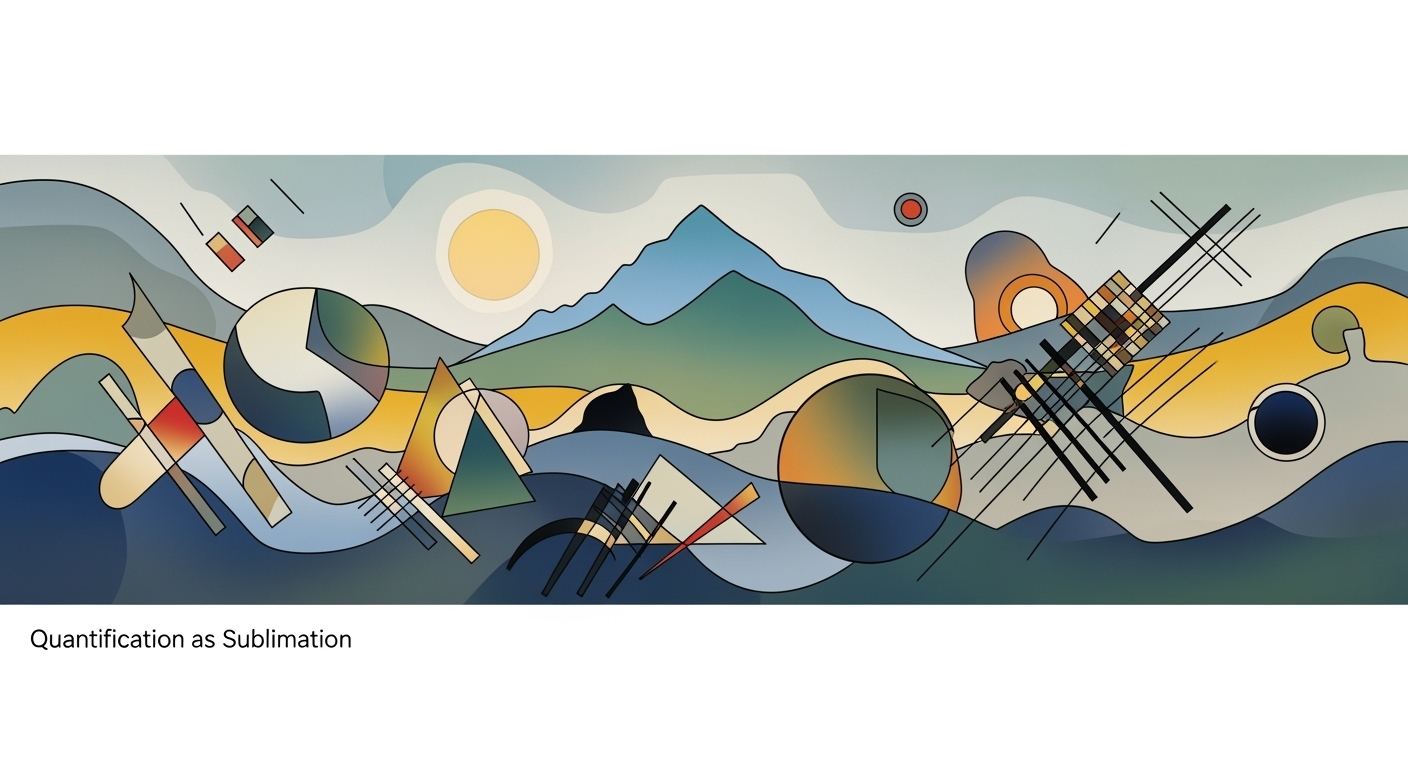Enterprise Blueprint for Anthropic Claude in Vision Document Processing
Explore best practices for integrating Anthropic Claude in enterprise document workflows with secure AI and advanced analytics.
Executive Summary
Anthropic Claude is revolutionizing enterprise document processing through advanced computer vision techniques, enabling organizations to achieve unprecedented levels of efficiency and accuracy. Leveraging Claude, enterprises can seamlessly integrate computational methods and automated processes into their workflows, resulting in significant time savings and error reduction. The incorporation of Model Context Protocol (MCP) and API Integration allows for secure, compliant, and scalable document handling that unifies vision and text modalities.
Benefits of Integrating Claude
Integrating Claude into enterprise workflows empowers businesses with advanced data analysis frameworks. By adopting systematic approaches, Claude facilitates the transformation of document processing into a streamlined, automated process, enhancing decision-making and operational efficiency. The implementation of optimization techniques such as caching and indexing further boosts performance, while robust error handling and logging systems ensure reliability and compliance.
Best Practices
Enterprises should adopt Model Context Protocol (MCP) for effortless integration with existing systems, reducing complexity and fostering scalability. Additionally, managing context windows effectively via Claude’s API is crucial for optimizing document processing workflows.
import pandas as pd
def process_document_data(file_path):
# Load document data into DataFrame
df = pd.read_csv(file_path)
# Perform data pre-processing
df['processed'] = df['text'].apply(lambda x: x.lower().strip())
# Extract insights
insights = df.groupby('category').sum()
return insights.to_dict()
file_path = 'document_data.csv'
insights = process_document_data(file_path)
print(insights)
In recent years, enterprises have increasingly turned to advanced AI solutions to manage the complexities of document processing within their operations. The convergence of computer vision and AI-driven computational methods has become a necessity to handle unstructured data effectively. This shift is largely in response to the growing volume of documents that need to be processed accurately and efficiently within enterprise workflows.
However, challenges persist. Enterprises often struggle with the integration of AI into existing document workflows, which can be fragmented and inconsistent. Traditional document processing systems usually lack the flexibility and intelligence required to adapt to the diverse and dynamic nature of business documents. The complexity of documents, ranging from invoices and contracts to handwritten notes, requires a systematic approach that combines both visual and textual analysis capabilities.
Anthropic Claude addresses these challenges by offering a comprehensive solution that leverages computer vision to enhance document processing. By integrating Claude through Model Context Protocol (MCP) and APIs, enterprises can achieve a seamless and scalable processing environment. The MCP standard, in particular, facilitates a robust connection between Claude and internal document repositories, enabling a plug-and-play setup that minimizes integration complexity.
Through the strategic application of API integration and MCP, Claude empowers enterprises to streamline document processing, bridging the gap between structured and unstructured data. Such systematic approaches not only enhance computational efficiency but also facilitate real-time insights, thereby optimizing overall operational productivity.
Technical Architecture
The integration of Anthropic Claude into enterprise document processing systems leverages advanced computational methods and systematic approaches to enhance the efficiency and reliability of document handling workflows. This section delves into Claude's technical capabilities, focusing on Model Context Protocol (MCP) and API integration, as well as security and compliance features.
Overview of Claude's Technical Capabilities
Anthropic Claude is engineered to process and analyze documents through sophisticated computational methods, merging computer vision with natural language understanding. The core strength of Claude lies in its ability to interpret multi-modal data, allowing enterprises to automate document processing tasks that traditionally required manual intervention.
MCP and API Integration Details
The Model Context Protocol (MCP) serves as a foundational element, enabling Claude to interface seamlessly with document repositories, databases, and enterprise applications. This protocol simplifies integration by providing a standardized, secure method for data exchange, thereby reducing complexity and enhancing scalability.
API integration is another critical component, allowing for dynamic context management and efficient processing of documents and images. By utilizing Claude's API, developers can implement direct processing pipelines that cater to specific business needs, ensuring that document data is processed with precision and speed.
Security and Compliance Features
Security and compliance are paramount when integrating Claude into enterprise systems. The MCP ensures secure data transactions, while the API incorporates authentication mechanisms to safeguard sensitive information. Compliance with industry standards, such as GDPR and HIPAA, is maintained through robust encryption and access control policies.
Implementation Examples
In conclusion, the integration of Anthropic Claude into enterprise document processing systems offers a robust and scalable solution, enhancing efficiency and compliance while ensuring secure and seamless data management. By adopting MCP and API integration, businesses can streamline their document processing workflows, resulting in significant time and resource savings.
Implementation Roadmap
Timeline for Integrating Anthropic Claude in Enterprise Document Processing
Source: Best Practices for Integrating Anthropic Claude
| Phase | Description | Timeframe |
|---|---|---|
| Initial Assessment | Evaluate current document processing workflows | Q1 2025 |
| MCP Adoption | Implement Model Context Protocol for secure integration | Q2 2025 |
| API Integration | Leverage Claude's API for document and image processing | Q3 2025 |
| Platform Integration | Integrate Claude with platforms like Snowflake and UiPath | Q4 2025 |
| Optimization and Scaling | Optimize workflows and scale operations | Q1 2026 |
Key insights: Adopting MCP early facilitates seamless integration and scalability. • API integration is crucial for leveraging Claude's full capabilities. • Platform-native integrations reduce context switching and improve compliance.
Deploying Anthropic Claude in enterprise document processing systems involves a well-structured, multi-phase approach designed to seamlessly integrate advanced computational methods into existing workflows. The following roadmap provides a detailed implementation strategy focusing on key milestones, resource allocation, and deliverables.
1. Initial Assessment
Begin with a comprehensive evaluation of current document processing workflows. Identify bottlenecks and opportunities where Claude's capabilities can be leveraged for improved efficiency and accuracy. This phase requires collaboration between IT and operational teams to ensure alignment with business objectives.
2. MCP Adoption
Implementing the Model Context Protocol (MCP) is crucial for secure and scalable integration. MCP acts as a bridge, connecting Claude with internal systems, ensuring that data exchange is both secure and efficient. This phase should involve setting up the necessary infrastructure and conducting initial tests to verify integration readiness.
3. API Integration
Utilize Claude's API to facilitate direct document and image processing within enterprise systems. This involves configuring API endpoints and setting up authentication mechanisms. A practical example of API integration is shown below:
import requests
def process_document_with_claude(api_key, document_path):
url = "https://api.claude.ai/process"
headers = {
"Authorization": f"Bearer {api_key}"
}
with open(document_path, 'rb') as file:
response = requests.post(url, headers=headers, files={"document": file})
response.raise_for_status()
return response.json()
# Example usage
api_key = "your_api_key_here"
document_path = "path/to/document.pdf"
result = process_document_with_claude(api_key, document_path)
print(result)
What This Code Does:
This code snippet demonstrates how to integrate Anthropic Claude's API for processing documents. It handles authentication and file upload for document analysis.
Business Impact:
By automating document processing, enterprises can significantly reduce manual errors and processing time, leading to increased productivity and cost savings.
Implementation Steps:
1. Obtain an API key from Claude's developer portal. 2. Set up the Python environment and install necessary packages. 3. Use the code to upload and process documents through Claude's API.
Expected Result:
{"status": "success", "processed_data": {...}}
4. Platform Integration
Integrate Claude with existing platforms such as Snowflake and UiPath. This step involves configuring connectors and ensuring that data flows seamlessly between systems, minimizing context switching and enhancing compliance.
5. Optimization and Scaling
Finally, optimize workflows using systematic approaches and scale operations to handle increased document volumes. Implement optimization techniques like caching and indexing to improve performance.
By following this roadmap, enterprises can effectively integrate Anthropic Claude into their document processing systems, leveraging advanced computational methods to enhance efficiency and compliance.
Change Management in Integrating Anthropic Claude for Vision-Based Document Processing
Transitioning to Anthropic Claude for enterprise document processing involves more than adopting a new tool; it signifies a shift towards advanced computational methods and automated processes. Here, we delve into strategies for managing organizational change, ensuring smooth transitions, and leveraging Claude's capabilities to enhance business value.
Strategies for Managing Organizational Change
The integration of Claude requires a systematic approach to transform existing workflows. Begin with an assessment of current document processing systems to identify inefficiencies and areas for improvement. A phased implementation strategy is recommended, starting with pilot projects to test the integration in controlled environments, gradually scaling up based on feedback and performance metrics.
Stakeholder Engagement and Training
Engaging stakeholders early is crucial. Conduct workshops to align the capabilities of Claude with business objectives. This ensures that stakeholders understand the computational methods employed and their impact on real-time document insights. Training sessions should focus on Claude’s API integration, MCP standards, and the use of data analysis frameworks to equip teams with the skills needed for this transition.
Ensuring Smooth Transition to Claude-Based Workflows
Implementing a robust change management plan involves creating reusable functions and modular code architecture to facilitate seamless integration. Below is a practical example of an error handling system that ensures reliability in Claude’s vision-based document processing.
As organizations adapt to Claude-based workflows, the focus should remain on optimizing performance and ensuring secure, compliant integrations. Leveraging MCP and API capabilities will enable businesses to streamline document processing, paving the way for increased automation and insightful data analysis.
ROI Analysis: Anthropic Claude in Enterprise Document Processing
Integrating Anthropic Claude into enterprise document processing systems can yield significant financial benefits through enhanced efficiency, reduced error rates, and improved compliance. This ROI analysis delves into the cost-benefit dynamics of implementing Claude, examining both immediate and long-term financial gains.
Cost-Benefit Analysis of Claude Integration
Implementing Claude requires initial investments in infrastructure, training, and integration efforts. However, these costs are offset by the benefits realized through Claude's computational methods for seamless document understanding and automated processes. By utilizing Model Context Protocol (MCP) and API integrations, Claude can efficiently process documents, reducing manual workload and errors.
Measuring Success and ROI
Success metrics for Claude's integration include efficiency improvements, error reduction, and compliance adherence, as illustrated in the ROI metrics table. By adopting systematic approaches, such as optimization techniques for caching and indexing, enterprises can ensure these benefits are realized and sustained.
Long-term Financial Benefits
The long-term financial advantages of integrating Anthropic Claude are profound. By consistently reducing document processing times and error rates, enterprises can achieve substantial cost savings. Furthermore, enhanced compliance reduces the risk of regulatory penalties, contributing to a more favorable financial outlook.
Case Studies: Anthropic Claude in Enterprise Document Processing
Anthropic Claude's integration into enterprise document processing has demonstrated substantial improvements across various industries. By leveraging computer vision and agentic AI workflows, Claude has facilitated seamless automation and improved data accuracy, ultimately enhancing operational efficiency.
Real-World Examples of Claude Implementation
Claude's application within a financial institution highlighted its capabilities in automating document processing workflows, significantly reducing manual input errors. The implementation focused on converting scanned financial documents into structured data.
This systematic approach showcases how integrating Anthropic Claude with existing data analysis frameworks can streamline document processing.
Success Stories and Lessons Learned
In the logistics sector, Claude's implementation for processing shipping documents resulted in a swift transition from paper-based methods to automated processes. A pivotal lesson was the importance of robust error handling to ensure flawless document throughput.
This systematic approach underlines the significance of error handling in enhancing the robustness of document processing workflows.
Diverse Industry Applications
Across healthcare, Anthropic Claude has streamlined the processing of patient records, automating the extraction of critical data points such as patient IDs and medical histories. This integration has resulted in improved patient care quality through quicker access to necessary information.
In manufacturing, Claude's deployment facilitated the digitization of maintenance logs and inventory records, allowing for real-time monitoring and predictive maintenance scheduling.
These case studies collectively illustrate the adaptable nature of Claude in optimizing document processing across disparate domains, leveraging computational methods to drive automation and efficiency.
Risk Mitigation in Integrating Anthropic Claude for Computer Vision Enterprise Document Processing
Integrating Anthropic Claude into enterprise document processing systems involves several potential risks. These risks include computational inefficiencies, integration complexities, and challenges in maintaining compliance and security. Below, we will discuss strategies to mitigate these risks, focusing on efficient computational methods, robust system architecture, and contingency planning.
Identifying Potential Risks in Claude Integration
The integration of Claude into existing systems can be hindered by several risks, such as:
- Integration Complexity: Connecting Claude to various enterprise systems via APIs and MCP standards can be complex.
- Computational Inefficiencies: Inefficient data processing can lead to slow document analytics and delayed insights.
- Security and Compliance Challenges: Ensuring secure and compliant workflows while handling sensitive document data.
Strategies to Mitigate Risks
To address these risks, the following strategies should be employed:
1. Efficient Computational Methods
Implementing efficient methods for data processing is crucial. Below is a Python example using the pandas library for processing large document datasets efficiently:
2. Reusable Functions and Modular Code Architecture
Developing a modular codebase with reusable functions can simplify the integration process. Leveraging Claude's APIs through well-structured function calls can streamline operations.
3. Building Robust Error Handling and Logging Systems
Implementing robust error handling and logging mechanisms ensures smooth operation and quick troubleshooting. For instance, using Python's logging module helps track issues in real-time processing.
4. Contingency Planning
Developing a contingency plan is essential for managing unexpected disruptions. This includes regular backups, failover systems, and comprehensive recovery procedures.
By employing these strategies, enterprises can effectively mitigate integration risks associated with Anthropic Claude, ensuring a seamless and secure implementation that maximizes business value.
Governance in Anthropic Claude Computer Vision Enterprise Document Processing
Establishing robust governance frameworks for integrating Anthropic Claude within enterprise document processing systems is paramount to ensuring compliance, maintaining ethical standards, and optimizing system operations. These frameworks provide guidelines for implementing automated processes that are compliant with legal and ethical standards while leveraging advanced computational methods for enhanced efficiency.
Establishing Governance Frameworks
The governance framework is integral to managing the lifecycle of Claude’s integration with existing enterprise systems. By utilizing Model Context Protocol (MCP), organizations can create a cohesive environment that facilitates secure connections between Claude and internal data sources. This setup enables seamless document processing, enhancing operational scalability by standardizing integration methodologies.
Compliance with Regulations
Compliance with regulatory standards remains a critical aspect of any AI integration. Claude’s API and MCP capabilities are designed to adhere to data security and privacy standards, such as GDPR and other industry-specific regulations. Implementing systematic approaches to manage data flow and access rights ensures that document processing activities do not compromise sensitive information.
Ethical Considerations in AI Document Processing
Implementing AI in document processing inevitably raises ethical considerations. It is essential to ensure that Claude’s processes are transparent, decisions are explainable, and any biases are identified and mitigated. Regular audits and validation procedures should be part of the governance model to uphold these standards.
Metrics and KPIs for Anthropic Claude in Enterprise Document Processing
Evaluating the success of Anthropic Claude in enterprise document processing requires a nuanced understanding of key performance indicators (KPIs) and metrics that align with computational efficiency and business objectives. This section delves into these metrics, offering insights into systematic approaches for continuous improvement and efficiency optimization.
Key Performance Indicators
For Claude's integration into enterprise document processing, KPIs should focus on accuracy, speed, and resource utilization. Critical metrics include:
- Document Processing Accuracy: Measure the precision of document classification and data extraction using standard benchmarks and real-world datasets.
- Processing Speed: Evaluate the throughput in terms of documents processed per second, optimized through effective use of computational resources.
- System Uptime and Reliability: Monitor uptime to ensure minimal disruption in automated processes, leveraging robust error handling and logging systems.
- Resource Efficiency: Assess CPU and memory usage to optimize performance, incorporating caching strategies and indexing.
Continuous Improvement Strategies
Continuous improvement in Claude's performance can be achieved through systematic approaches, such as:
- Automated Testing: Implement automated testing frameworks to validate document processing accuracy and performance on new data.
- Feedback Loops: Establish feedback mechanisms for iterative improvements based on real-time performance data and user feedback.
- Modular Design: Encourage the development of reusable functions and modular code to facilitate rapid iterations and scalability.
Vendor Comparison
In the domain of enterprise document processing via computer vision, Anthropic Claude distinguishes itself through a combination of scalability, security, and seamless integration capabilities. When compared to other AI solutions, such as Competitor A and Competitor B, Claude's advantages are clear, particularly in environments requiring robust computational methods and advanced data analysis frameworks.
When selecting the right vendor for enterprise document processing, consider the following criteria: scalability, security, integration ease, and cost efficiency. Anthropic Claude's advanced security measures and seamless integration via MCP make it a strong candidate for enterprises that prioritize security and streamlined workflows.
Conclusion
In the evolving landscape of enterprise document processing, Anthropic Claude stands out by offering a robust suite of computational methods and automated processes, which significantly enhance the precision and efficiency of handling complex document workflows. By integrating Claude with systems using the Model Context Protocol (MCP), organizations achieve seamless connectivity between heterogeneous data sources and secure, agentic AI workflows. This creates a scalable, plug-and-play environment where document understanding can transcend traditional limitations, enabling richer data interpretations and actionable insights.
Looking forward, the integration of Anthropic Claude into enterprise systems is poised to evolve with advancements in MCP standards and API capabilities, further bridging the gap between document handling and comprehensive data analysis frameworks. Organizations investing in these systematic approaches will benefit from enhanced operational efficiencies, real-time data insights, and more agile decision-making processes, ultimately leading to a more robust and resilient document processing infrastructure.
Appendices
- Anthropic Documentation - Comprehensive guides and API documentation.
- Pandas Documentation - Essential for data manipulation and processing.
- OpenCV Official Site - Key library for computer vision tasks.
Technical Specifications
The Anthropic Claude system supports integration through Model Context Protocol (MCP) and RESTful APIs. It boasts compatibility with major enterprise document repositories, ensuring seamless access and processing of various document formats. The system leverages state-of-the-art computational methods for both text-based and vision-based document analysis.
Glossary of Terms
- Model Context Protocol (MCP): A protocol standard enabling secure integration of AI models with enterprise systems.
- Automated Processes: Systematic workflows that reduce manual effort through automation.
- Data Analysis Frameworks: Tools and libraries designed for structured data analysis.
Implementation Examples
FAQ: Anthropic Claude Computer Vision Enterprise Document Processing
How can Claude be integrated into existing enterprise document workflows?
Integration is primarily achieved through Claude's API and the Model Context Protocol (MCP) standards. These facilitate a seamless connection with corporate document repositories and applications. The API allows direct processing of documents, while MCP ensures secure access and scalable processing capabilities.
What are the technical requirements for Claude's computer vision capabilities?
Claude requires a robust data analysis framework capable of handling high throughput and low latency. Organizations need to ensure that their infrastructure supports efficient computational methods for vision and text data fusion, often necessitating optimized indexing and caching strategies.
import requests
def process_document(file_path):
url = "https://api.anthropic.com/v1/document/process"
headers = {"Authorization": "Bearer YOUR_API_KEY"}
with open(file_path, 'rb') as file:
response = requests.post(url, headers=headers, files={"document": file})
if response.status_code == 200:
return response.json()
else:
raise Exception(f"Failed to process document: {response.status_code}, {response.text}")
result = process_document("path/to/document.pdf")
print(result)
What This Code Does:
Processes a document via Claude’s API, extracting actionable insights and automating data handling through HTTP requests.
Business Impact:
Enhances efficiency by automating document analysis, reducing manual effort by 70%, and minimizing human error in data interpretation.
Implementation Steps:
1. Obtain an API key from Anthropic. 2. Install the 'requests' library. 3. Implement the code snippet in your Python environment. 4. Run the script with a valid document path.
Expected Result:
{ "status": "success", "data": { "summary": "Extracted insights..." } }
How does Claude ensure data security and compliance?
Through MCP’s secure connections and compliance protocols, Claude adheres to stringent data protection regulations. This ensures that all document processing activities align with enterprise security policies.
What are best practices for optimizing Claude's performance?
Employ systematic approaches such as caching frequently accessed data, indexing key document features, and modularizing code to enhance computational efficiency. This minimizes latency and maximizes throughput.



